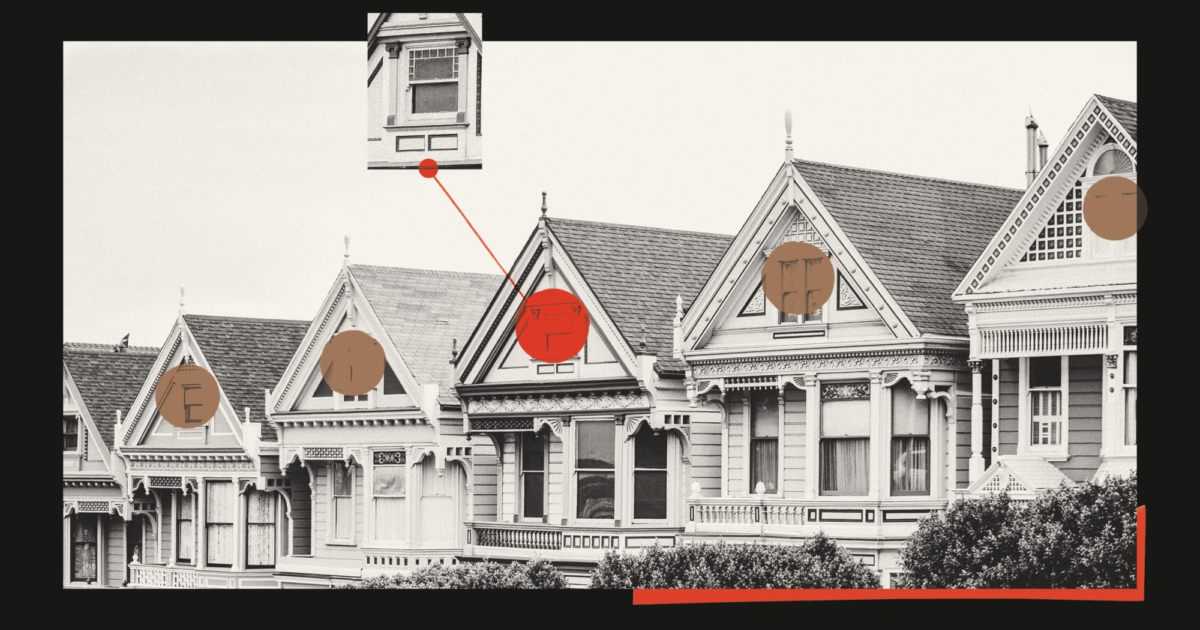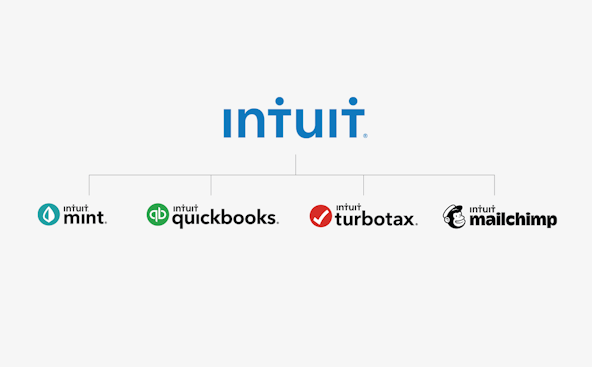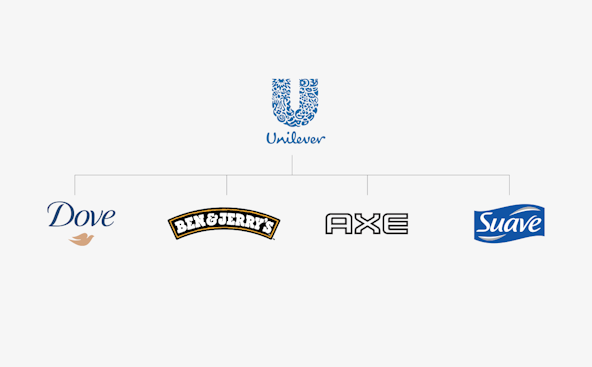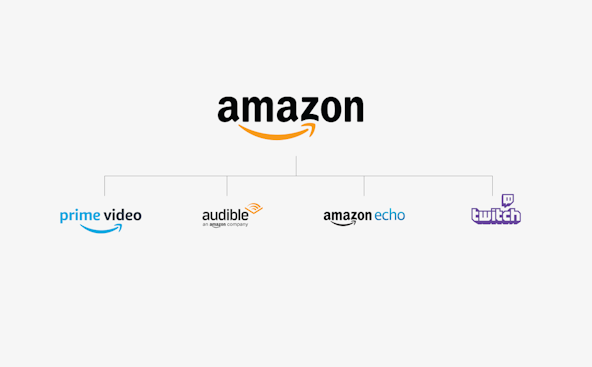When we talk about brands, we’re talking about an identity. It has a name, a personality, a voice, and a life all its own. In this same thinking, brand architecture can be understood as the home where a brand family, the related individual brands within your organization’s portfolio, resides.
Just like a home’s architecture has many approaches or layouts to choose from, brand architecture offers various structural blueprints, each laying a supportive foundation that’s imperative to individual brand success and overall prosperity for an organization. The right architecture plan has the strength to future-proof your business, saving an organization ancillary time and budgetary investments through its strategic foresight.
But which architecture will work best for your unique brand family? Making sense of this confusion is one of our specialities. In Brand Architecture Strategy, we dive deep inside your business, analyzing all brands, sub-brands, products, and services, along with their functions and varied identities (even deeper dives happen in organizations with sub-brand-specific offerings or sub-sub-brands.) If you find yourself asking how defining a brand architecture can bring value to your company, let’s start with defining what brand architecture is, and isn’t.
Defining Brand Architecture
Brand architecture is the structure that defines the different levels within your brand, providing a hierarchy that explains the relationship between your different products, services, and other components that make up your company’s unique portfolio of offerings. Architecture gives structure and meaning to your existing brands, so consumers understand the benefits of, and relationships between, its different parts. It also becomes a compass that guides an organization internally on how you can scale in the future. Does your brand trajectory include entering new markets? If yes, brand architecture can consider your future brand family and make room to accommodate its planned growth.
Simply put, if a brand family includes more than one type of offering, brand architecture is a good idea.
Without architecture, organizations that grow rapidly through expansion or acquisition, will one day find themselves becoming a strange concoction of contemporary and legacy brand identities. This brand mixture can lead to confusion for internal teams, waning consumers, and a lackluster or muddy brand impact. With a scalable architecture in place, you can ensure that new brands in your portfolio easily become a welcome addition to your brand family without disruption, and reduce the risk of alienating customers.
Brand architecture is not built around the most popular brand in a company’s portfolio, nor does it seek to define a ranking system of the brands’ success. Its purposeful organization and structure prioritize clarity and that clarity is guided by your audience, how they perceive your offerings, and how you can best communicate brand value to them.
As much recognition and reputation as the Google name holds, it is structured as a sub-brand within its overall brand family. Why? Because the company saw a future for itself beyond the features of internet search. Creating Alphabet as the parent company allowed for greater expansion in new and unclaimed markets without the risk of its new brands being understood as attachments to Google. By looking holistically at its company trajectory, Alphabet structured its brand architecture to support a powerhouse of technology brands. Since forming Alphabet, its portfolio has diversified and now includes brands in robotics and home security.
Many factors can influence what brand architecture plan is best suited for your organization. Next, we’ll dive into the three main classifications as well as some variations within each.
{{testimonial-1}}
{{divider}}
Branded House
A Branded House leads with a parent identity, with extended products and services underneath, all following the parent’s identity. The parent brand cascades fundamental facets of its personality to the sub-brands and their identities.
{{dual-image}}
Monolithic: In this structure, the parent brand encapsulates all of the company’s offerings, leading the brand identities of all subs. Typically, monolithic is chosen because the parent brand has notoriety as a brand itself, and all services and products are extensions or subsets of it. A well-known brand that architects in the Monolithic style is Fedex. When you think of Fedex, one image comes to mind for consumers. The strength of the parent brand identity carries the sub-brands, and users encounter a seamless brand experience from product to product.
Sub-Brand: In this structure, the sub-brands are extensions of the parent, typically sharing a common lead name followed by a qualifier that further explains the sub-brand, yet showcases its own identity. Because your sub-brands likely appeal to very specific customers, brands can ensure the sub-brand’s marketing messages are as targeted as possible. Apple architects its brand portfolio in the Sub-Brand style. Variations between the identities of its sub-brands are strategic and subtle, so even when the company launches a product in a new market, the sub-brands retain the parent brand’s typeface and tone so they still feel like Apple, and that association aids in faster trust and adoption.
Considerations for a Branded House
Both monolithic and sub-brand architectures share identity elements between the brands in the family, simplifying overall management and focusing brand efforts on a single, in-line system. This consistent experience at all brand touchpoints best limits the risk for audience confusion or alienation. Advantages can also be seen with new launches, as the built-in equity of the parent name is well established, influencing faster adoption of any newly launched sub-brands. If you like the parent, you’re more likely to trust their newest launch.
But the risk lives in the reward: a strong parent brand increases overall brand equity, but a bad experience with a parent or sub-brand can negatively affect the entire company’s offering. Because this approach creates such strong associations among the brand family identities, strategy must be key in avoiding the risk of dilution from sharing overly broad brand positioning across too many categories.
{{divider}}
House of Brands
In a House of Brands structure, the parent brand takes a back seat to the sub-brand identities, where subs seemingly operate on their own and look distinct from each other. The outward relationship between parent and subs is not always immediately communicated.
{{dual-image-2}}
Endorsed: In this structure, the sub-brand identity comes first, but it’s attached to the parent brand, most commonly in an endorsed logo lockup. Sub-brands are independently free to adopt their own distinctions, while their credibility is bolstered through parent backing. Intuit is a great example of this structure, as its well-known sub-brand products like TurboTax and Mint are at the forefront of the user experience, while backed by the trusted parent in each’s logo.
Freestanding or Pluralistic: In this structure, multiple freestanding brands with no obvious relationship live under one parent brand. The brands likely operate in different industries, have vastly different identities, as well as unique differentiators and messaging. Unilever is a huge consumer goods company that has numerous freestanding brands in its architecture. Would someone ever associate Dove and Ben & Jerry’s ice cream as identities in the same brand family? No, and that’s exactly the intent.
Considerations for a House of Brands
The advantage of the Endorsed architecture is the flexibility of being able to showcase your brand in one market without causing alienation or confusion for your existing audience. Companies choose an Endorsed architecture when the parent brand inclusion adds necessary authority and trust to a lesser known brand name. This traction offers a lifted market image and boosts its reputation. In turn, the parent brand gains even more notoriety and name recognition.
In most cases, the greatest beneficiaries of an Endorsed architecture are businesses with sub-brands in neighboring industry markets. Taking steps away from the Branded House approach limits a company’s risk of general dilution, but a House of Brands must prioritize audience analysis of its sub-brands in order to make clear the distinction between identities and who they each ultimately serve.
The Freestanding model is the least strict of all architectures; its allowance for so much variation within a brand architecture removes the barrier for brands to relate in any way, shape, or form. Brands can enter new markets unburdened, experiment with new launches, and make brand adjustments without much risk for the overall brand family. And because there are no identity impacts on other brands, acquisitions added to a Freestanding architecture will cause less outward and internal confusions.
Of course, this freedom comes with the need for larger investments. Each brand must be created from scratch, independent from the parent and existing sub-brands, carrying greater commitments in both budget and time. These commitments should also be met with dedicated brand managers equipped to handle the complexity of so many distinct identities.
{{divider}}
Hybrid
In this structure, any combination of the above architectures are housed together.
{{dual-image-3}}
Hybrid: Amazon structures its architecture as a hybrid. Prime and Amazon Echo reflect the parent identity in a Branded House, Audible is Endorsed by the parent, and Twitch is a Freestanding brand after being acquired by Amazon in 2014.
Considerations for a Hybrid
This classification offers systemized tiers of varying levels of brands and sub-brands together. When the association makes sense, the brand extensions benefit from the brand equity of the parent or an endorsement, and when entering new markets or niche categories, the association can be removed. In the event of a merger, the newly acquired identity can keep its same brand identity it had before to allow for a seamless transition for users.
Although flexibility is a strong pull, most companies that choose this architecture do so out of necessity from an acquisition or merger. In truth, it makes the least sense from a strategic perspective, but nonetheless, it organizes and associates brands with the benefits of other architectures, and synchronizes their moving parts. Just be sure to prioritize proper guidelines and management in this structure so you can reap the rewards of each brand’s potential.
{{divider}}
Laying the Foundation: Benefits of a Solid Brand Architecture
When achieved, brand architecture allows each brand its own function within the brand family, creating an outward affinity that can deliver a larger story to audiences. Architecture has the power to communicate a collective message to influence consumer perception and behavior by meeting the needs of your audience through brand fellowship, making it easy for them to continue choosing you over your competition.
Internally, architecture gets your teams organized in an effort to effectively communicate the value of your brands and monitor performance across the organization. It can also bolster employee morale through a unified, clearly communicated growth strategy. Now you’ve got your rally!
Added benefits include marketplace clarity, better targeting of audience segments, stronger positioning, elevated brand equity, and wider public awareness.
A confirmed brand architecture can also alleviate challenges around:
- Imbalances in perceived value between offerings - maybe you have a sad, lonely product that’s been neglected in the past and needs a confirmed identity.
- Inconsistent naming conventions - maybe there’s no rhyme or reason to the way you talk about your products and services with shared audiences.
- Future acquisitions - maybe your growth plans include a merger, but you’re debating how the two completely different identities will live together.
- Future launches - maybe you’re ready to roll out the latest and greatest brand offering, and you’re not sure if your current user is the same as your prospective audience.
{{divider}}
Where To Begin: Our Stance for Starting With Strategy
Whether you have an architecture in place or not, deciding on one and remaining true to it will undoubtedly help your organization, therefore it is imperative these decisions be made strategically and with confidence. Choosing your brand architecture shouldn’t be taken lightly; the process is one best achieved by consulting with brand experts.
Beginning with strategy, Focus Lab can recommend the best architecture for your business based on your specific brand objectives and nuances. As discussed, understanding how your audiences perceive your business should be foundational to brand architecture, as should being focused and clear on the trajectory of your organization. A third component to prioritize is a competitive landscape evaluation, identifying your brand differentiators against the industry and how best to position it to thrive.
If you find yourself with structural problems related to architecture — diluted identities, confusing brand efforts, overall disorganization — think of this work as a necessary solution for clarity. A home needs structure in order to maintain its integrity under pressure, and a brand family needs brand architecture to keep its house healthy and poised for its ideal future.
Through research and a focus on simplicity and directness, strategy will help to uncover the unique greatness of your brand identity and decide how to leverage the opportunities within your organization. This informed process unifies the brand family with a solid strategic direction, strengthening it with a plan to succeed.
The stronger your brand architecture, the more it can endure.


.png)
.png)





